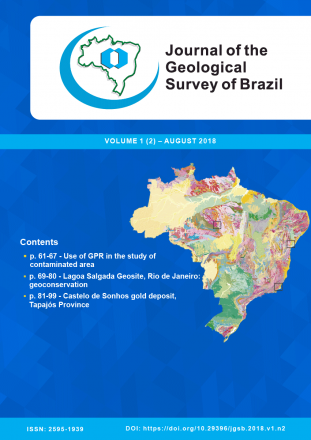Overview of the geological mapping in Brazil: historical analysis until 2022
Journal of the Geological Survey of Brazil
Overview of the geological mapping in Brazil: historical analysis until 2022
Autor Correspondente: L. T. Rosa-Costa | [email protected]
Palavras-chave: geological mapping, mapping programs, public policies, geological survey
Resumos Cadastrados
Resumo Inglês:
The purpose of this work is to contextualize the evolution of the geological mapping in Brazil since the creation of Company of Research of Mineral Resources (CPRM-Companhia de Pesquisa de Recursos Minerais), in 1969, as part of a set of governmental measures that aimed to boost the Brazilian mineral sector. Three mapping cycles were individualized (1969-1993, 1994-2002, and 2003-2022) over such 53 years, which time limits were defined by historic milestones, and which differ between them especially due to the methodological approach and to the support tools available. The analysis was carried out strictly considering 1:250,000 and 1:100,000 scales, which represent the main reference scales of geological cartography in Brazil. The assessing of the performance of the mapping shows that the level of the geological knowledge of the country is still incompatible with its mineral potentialities, with its strength in other natural resources, and with its importance in the world scenario.Only 48% of the Brazilian territory are mapped at the 1:250,000 scale, and 27% in 1:100,000 scale. Amazon represents the territory with lower geological knowledge, since less than 40% of such territory have mapping coverage in 1:250,000 scale. In contrast, more than 50% of the non-Amazon areas are mapped at the 1:100,000 scale. Over the period under analysis, emphasis was given to the Precambrian shields in relation to the sedimentary basins, which configure large cartographic gaps, as well as critical Precambrian areas of the Amazon, for example, a large part of the Guiana Shield, in the northern margin of Amazon River. In addition to the challenge of mapping a country of continental dimensions and with heterogeneous geoeconomic contexts, other factors contribute to this scenario, among them, the discontinuity of governmental initiatives and programs, which directly affect the planning of the mapping, the budget for investments in projects, human resources, infrastructure, and on the articulation of productive partnerships.This review shows that the periods of greater productivity in the geological mapping were a consequence of well-defined governmental guidelines, proper investments, and sharing of responsibilities with State governments and Brazilian universities, for example, such as happened in countries that had the perception of the importance of basic geological surveys as a strategy for development.

